When creating work instructions, the first step is to specify the information to be published. When a Work Instruction Report is run, a new screen comes up so this information can be chosen. Creating a work instruction can be done within the routing, operation, or activity editors or the line balancing module. Within the editors, click on Reports and then either the Work Instruction Report or the specific report if it is available (SOP/SOS is commonly available). Note: An entity must be selected or the fields will appear grayed out and will not be able to be selected.
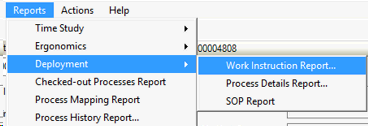
WI Deploy Report
The screen that appears should look like the one below.
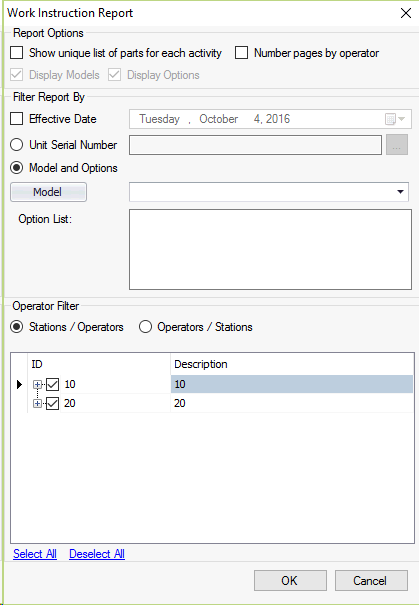
WI Report
Filter Headings
The first heading focuses on what will be included in the report.
1.When checked, the 'Show unique list of parts for each activity' prompts the report to show all unique part lists for each activity.
2.The 'Display Models' and 'Display Options' check boxes tell the report whether to show models and options in the report. These boxes are commonly grayed out and checked, as they must be shown in many work instructions.
The second heading is used for filtering.
1.The user has the ability to filter the process (Operations, Activities, Activity-Resources, Activity-Consumption) by Effective Date. Note that selecting the Unit Serial Number does not impact effectivity filtering.
2.The user has the option to show one or multiple unit specific serial numbers, activated by either entering in Unit Serial Numbers or by clicking on the ellipsis box. When you select the ellipsis box an Order Selection Form screen will pop up. In this screen you can filter Unit Serial Numbers by date, Order Number, or from external excel files. Note: This takes away Model and Option filtering. Selecting a USN(s) will create a list of models-options based on each order. It will not utilize the Unit Serial Start and Unit Serial Stop fields for process effectivity.
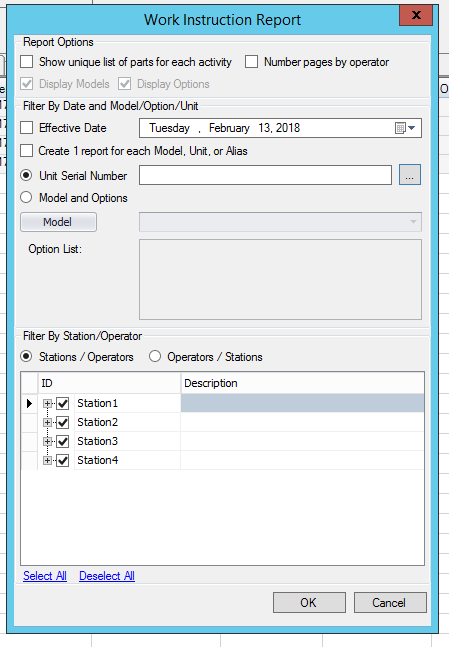
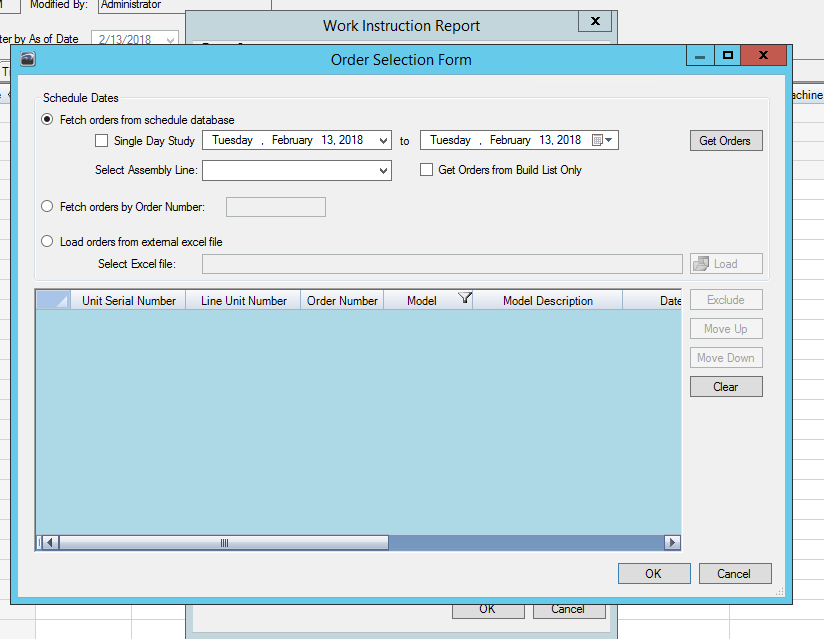
3.The Model drop down allows a single model's work instructions to be created. This is used when a change has affected only specific models within a line and not all instructions need to be re-done. Note: Only one model can be selected in this drop down.
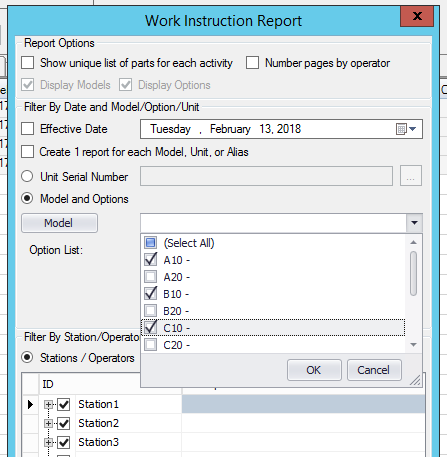
Model Drop Down
4.The Options List field can be used to show only certain models. They must be typed in and separated by commas in a typical 'comma separated list' format. Note: They must be typed exactly as they appear in the Assembly Planner database for Option IDs
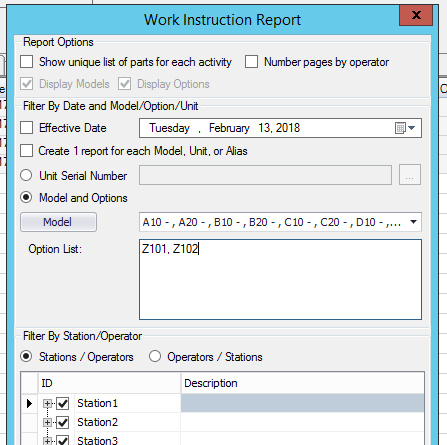
Option List Field
The final heading contains the ability to select specific workstations.
1.A checked box indicates a station to be included in the report, while a non-checked box indicates a station to be filtered out of the report.
Activity Editor Special Case
If the report is chosen within the Activity Editor, the following red text may appear at the top of the filtering screen.

Work Instruction Report input window when selected from the Activity Editor
This is to remind you the activity will be shown even if it should be filtered out as a result of model/option filtering. Only one activity can be selected within this editor, so it must be shown on the report.
Creating the Work Instruction
When all setup changes are finished, clicking the OK button brings up the next screen. In some cases (ie. SOS/SOP), the report will be brought up automatically and will be ready for printing. This is the case when a specific report was selected and the Work Instruction Report button was not used. In the case that Work Instruction Report was used, a new screen will come up requesting the type of report to be completed.

Work Instruction Report Type Request Screen
The report type can be selected from the drop down, and when the submit button is clicked, the report will be generated.
Line Balancing Special Case
Within the Line Balancing Module, the Station Work Instructions Report is one of the options available within the Report Manager, as well as the individual SOP/SOS when available. All fields and effects remain the same, but without the need to load a new screen.
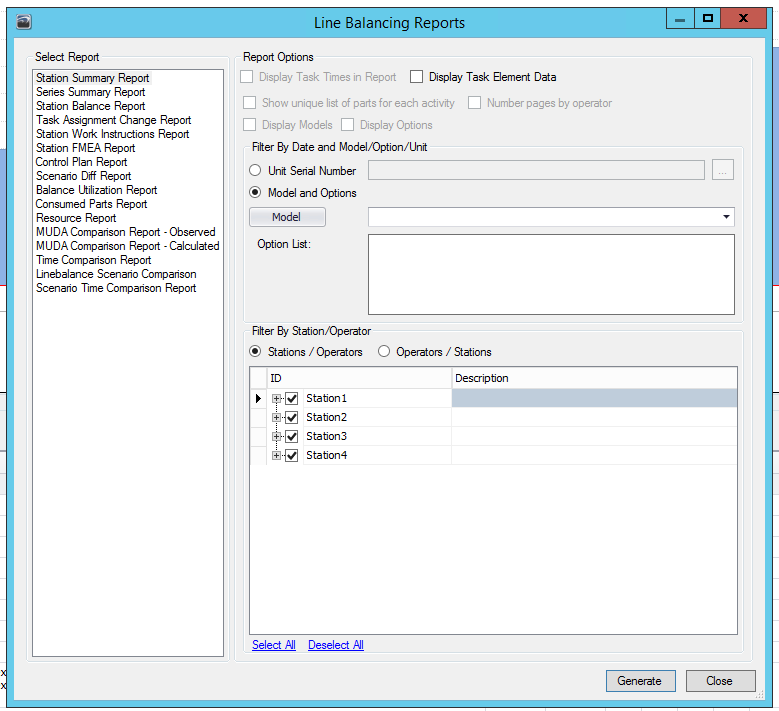
Line Balancing Reports